⏳ The Demographic Time Bomb: How the World Faces Its Labor Crisis in 2025

In 2025, humanity stands at an invisible crossroads. For the first time in modern history, the balance between youth and age, workers and retirees, creation and maintenance — is tipping globally. Fertility has fallen, lifespans have lengthened, and economies are quietly aging in unison.
What happens when the world runs out of young people?
🌍 Fertility, Migration, and the Vanishing Youth
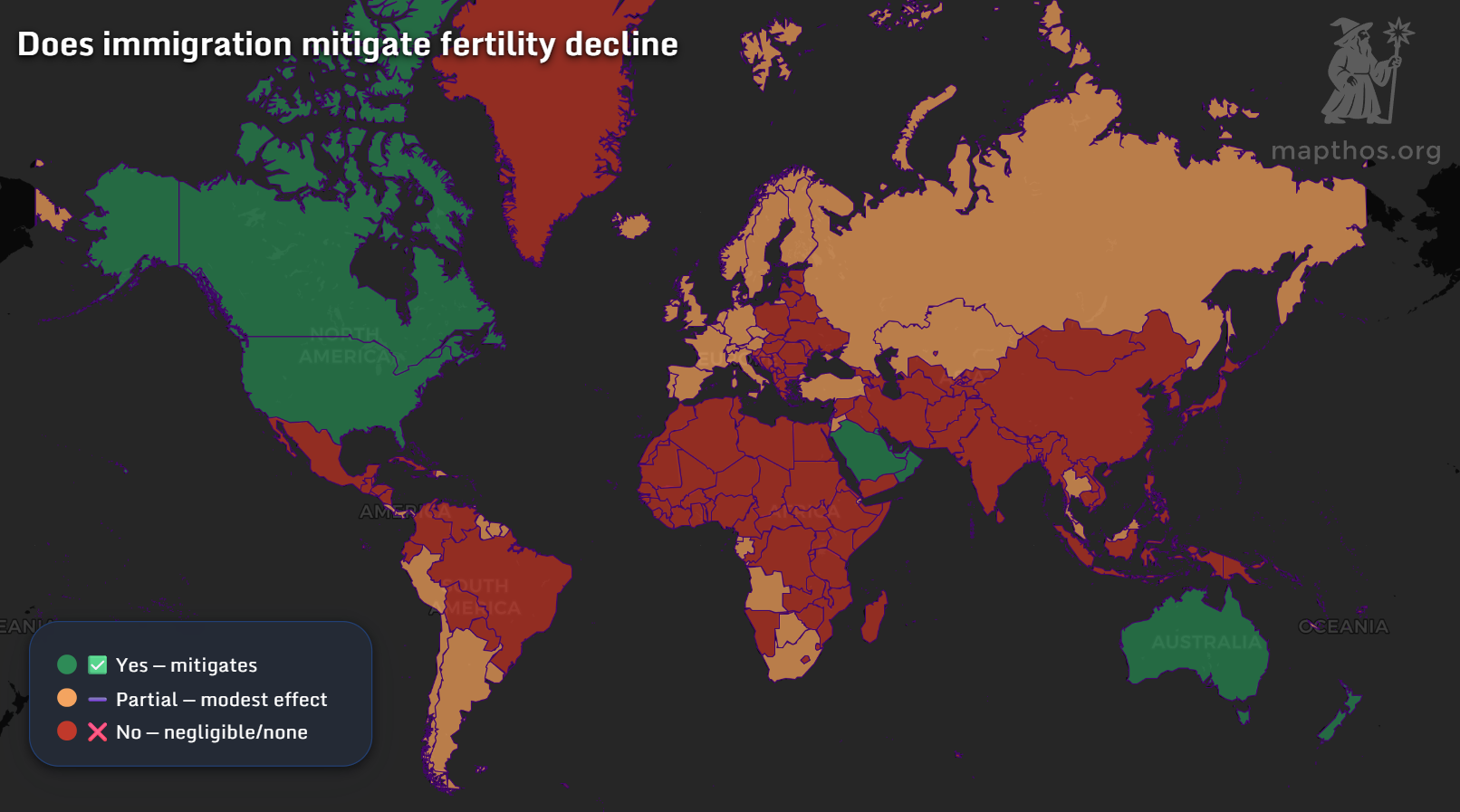
The first map shows a hard truth: in most nations, immigration barely offsets fertility decline. While Canada, Australia, and parts of the Gulf maintain stability through migration inflows, much of Europe and East Asia — from France to Japan — sees little relief. The world’s population engine is sputtering.
In 1950, every woman had about 5 children. By 2025, the global average is near 2.3 — barely replacement level.
🏙️ City vs Countryside: The Fertility Divide
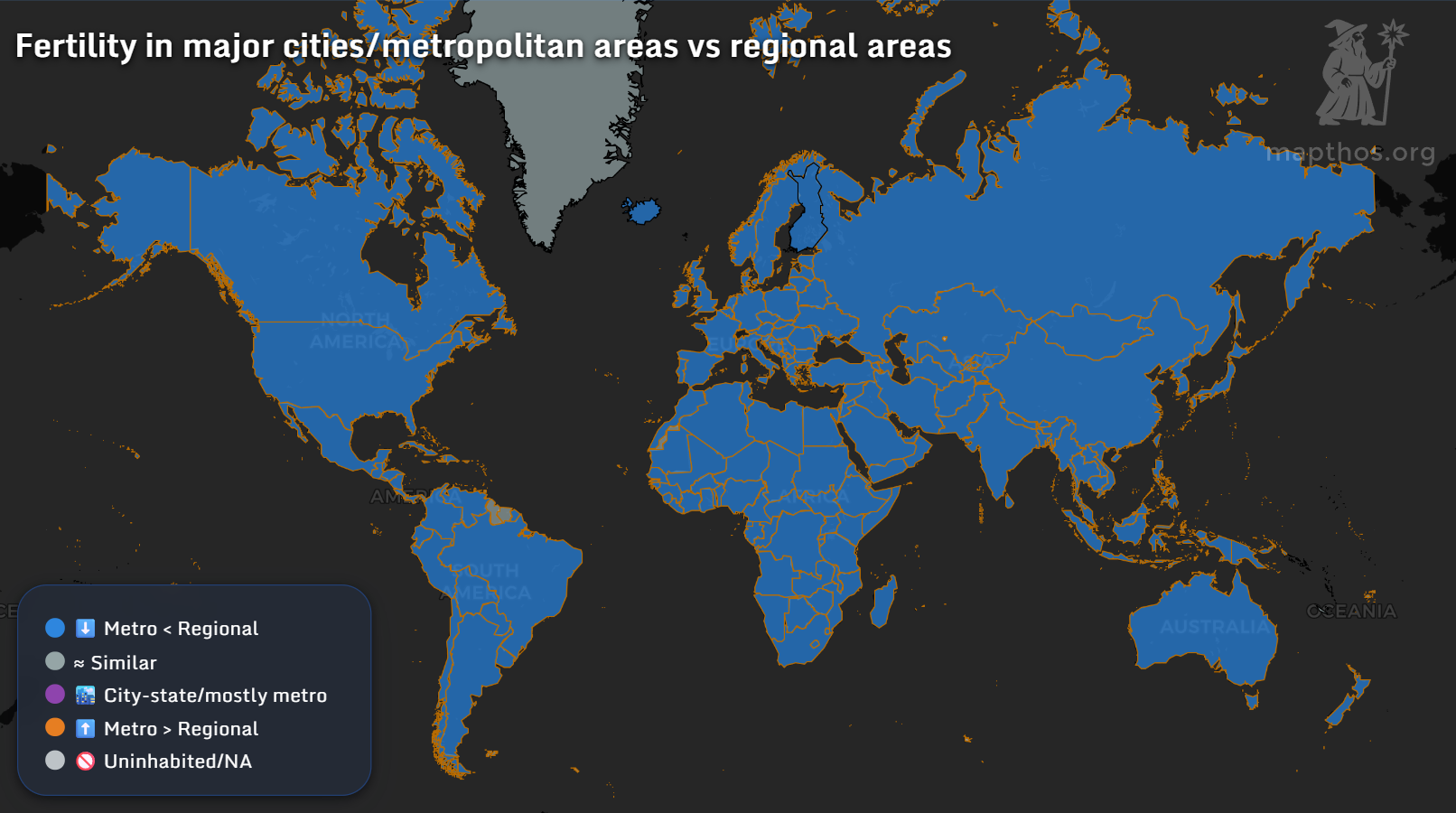
Urban life may offer opportunity, but it comes at a demographic cost. Almost every country shows lower fertility in cities than in regional areas — from Tokyo to Toronto, from Paris to Pretoria. City-states like Singapore exist in perpetual low-fertility equilibrium, while rural regions still drive what little population growth remains.
Urbanization, once a symbol of progress, has become a quiet fertility suppressant.
🏠 Affordability and the Cost of Starting a Life
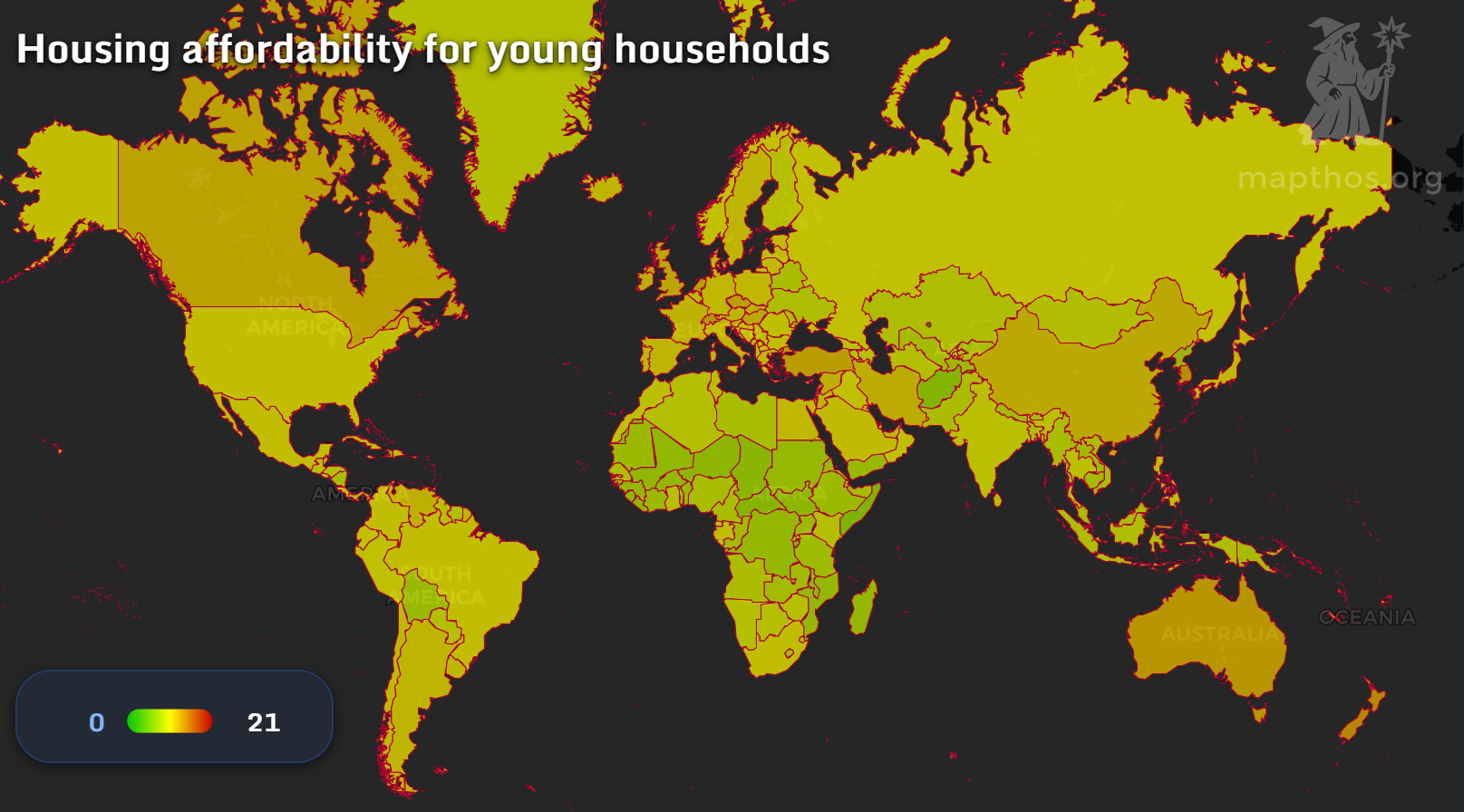
Across continents, the yellow glow of this map tells another story — housing is unaffordable almost everywhere. For young households, the dream of homeownership is slipping away. In countries where fertility is lowest, like South Korea or Italy, housing costs correlate directly with delayed family formation.
In short: the global fertility map looks a lot like a real estate crisis map.
💼 Jobs, Labor, and the Shrinking Workforce
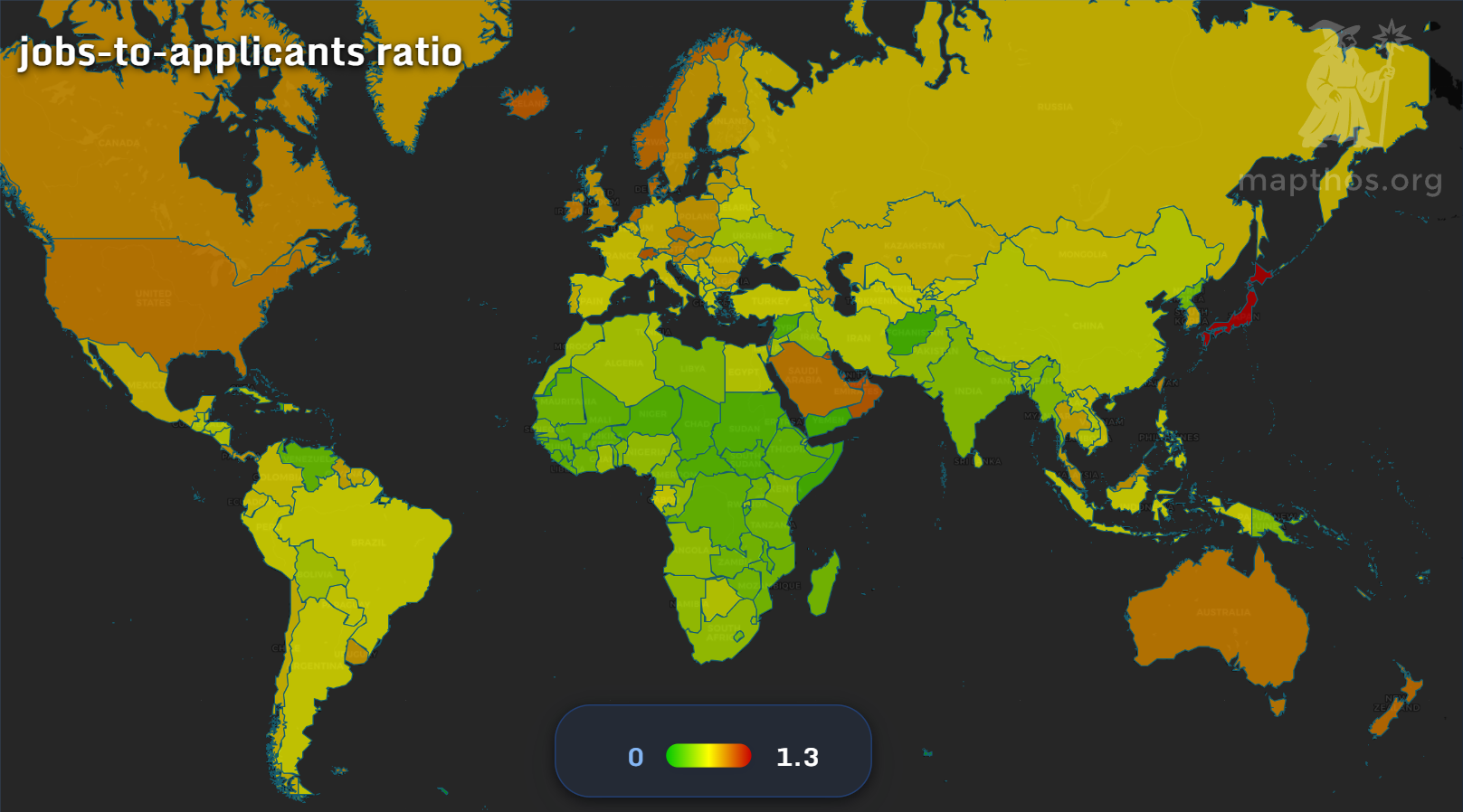
A shrinking labor pool reshapes opportunity. Some economies — like Japan and Australia — face more job openings than applicants, while others, particularly in Africa and South Asia, still struggle with underemployment.
As the ratio narrows globally, the traditional worker-employer balance is fracturing.
📉 Birth Rates and the End of the Baby Boom Era
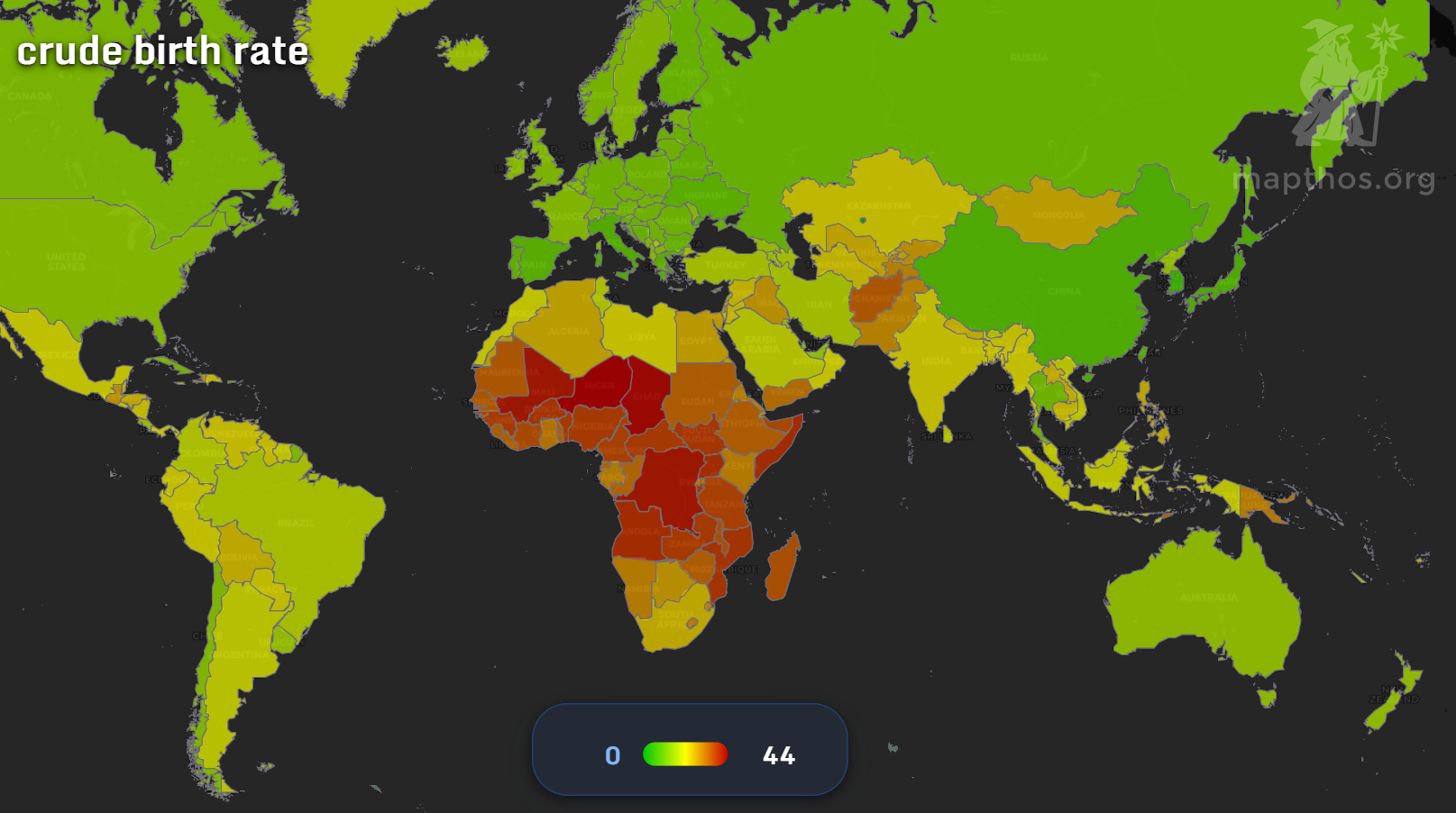
From the red core of sub-Saharan Africa to the pale greens of Europe and East Asia, this map captures the end of the baby boom era. Nations once young are now aging together — a synchrony unprecedented in history.
⚠️ Labor Shortages and Economic Strain
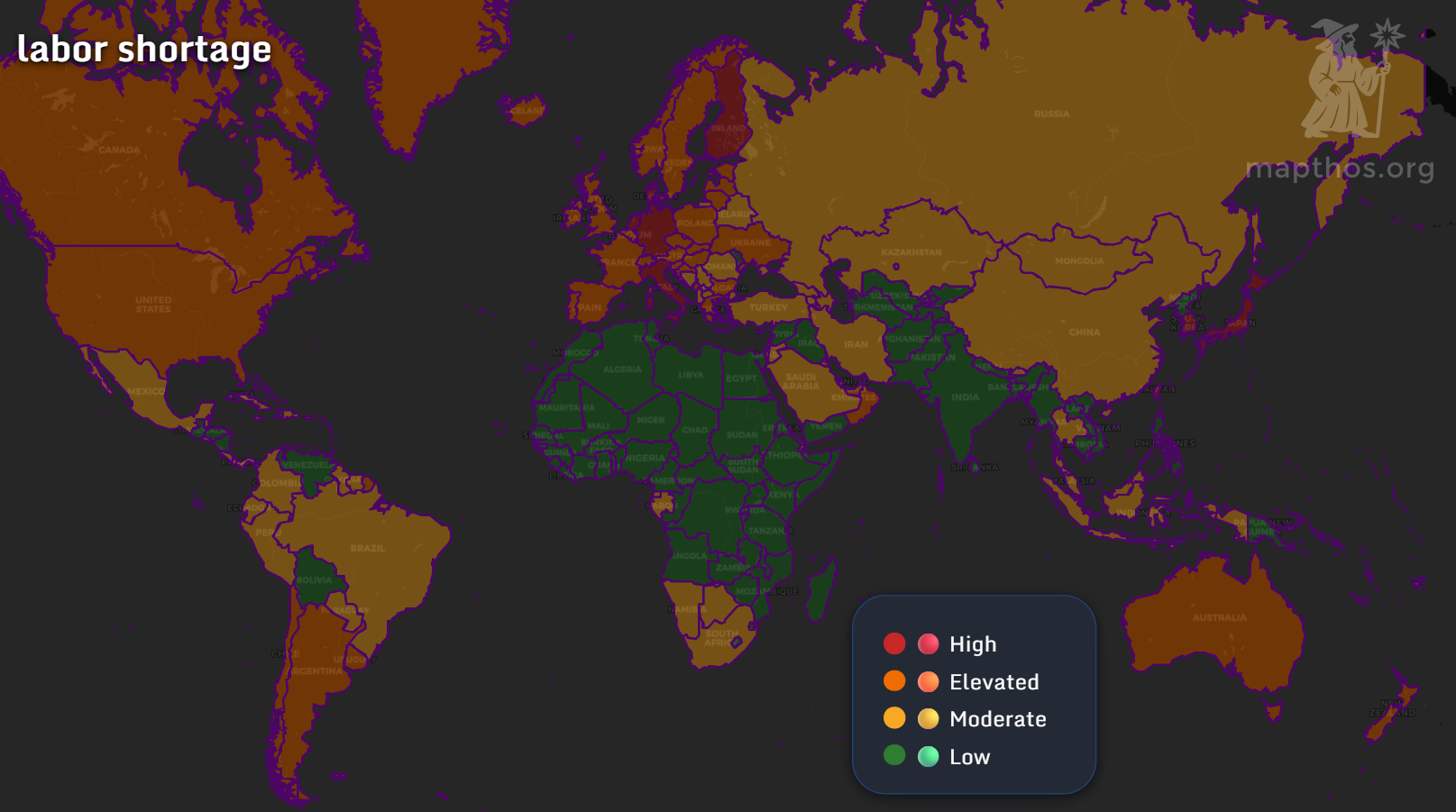
Labor shortages are no longer isolated — they are structural. Europe, Japan, and North America report high-to-severe shortages, while much of Africa still experiences surplus labor. This imbalance defines the next century’s migration and automation trends.
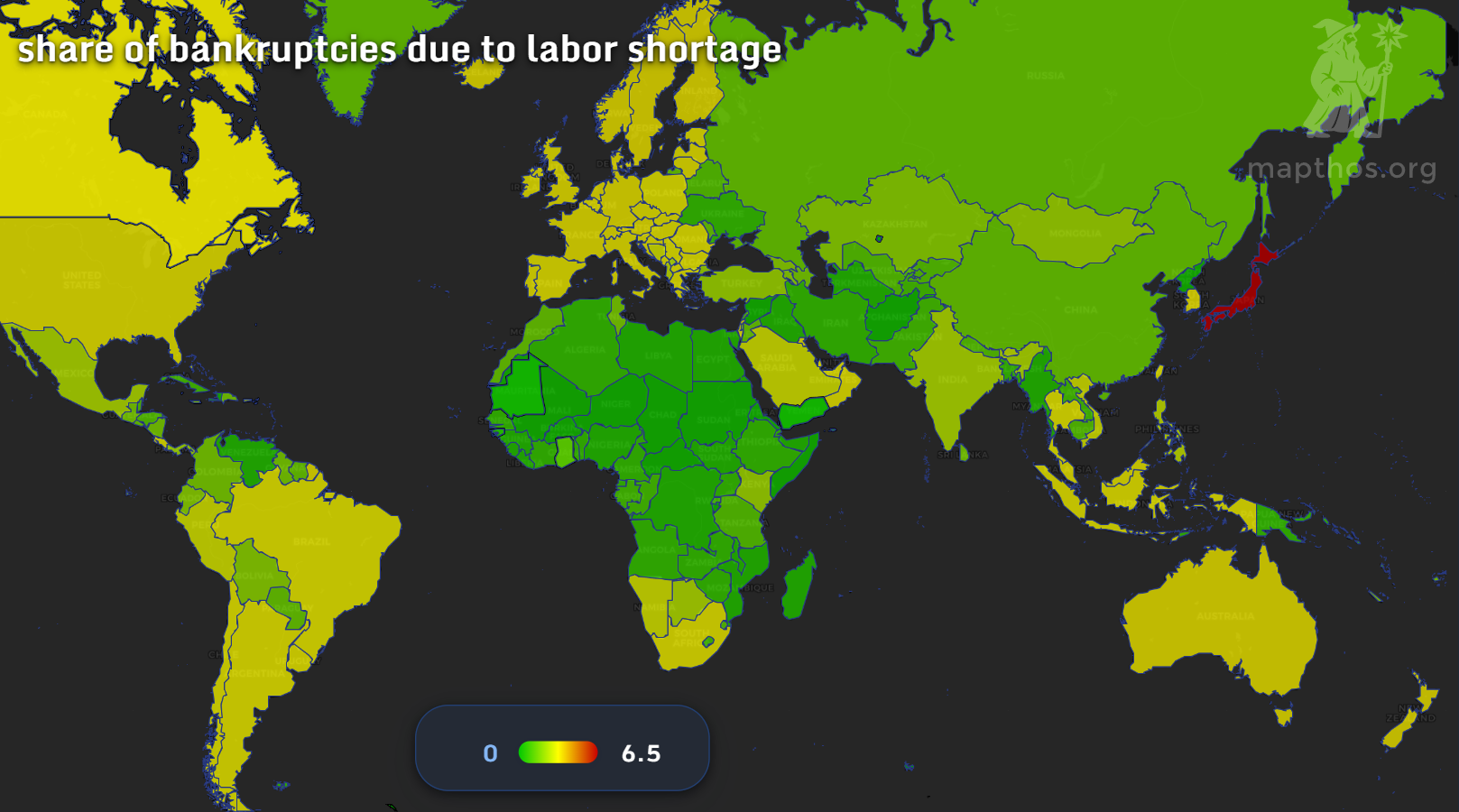
The data goes further: in some developed economies, up to 6% of bankruptcies now result from lack of workers, not lack of demand.
🕰️ The Oldest Societies in History
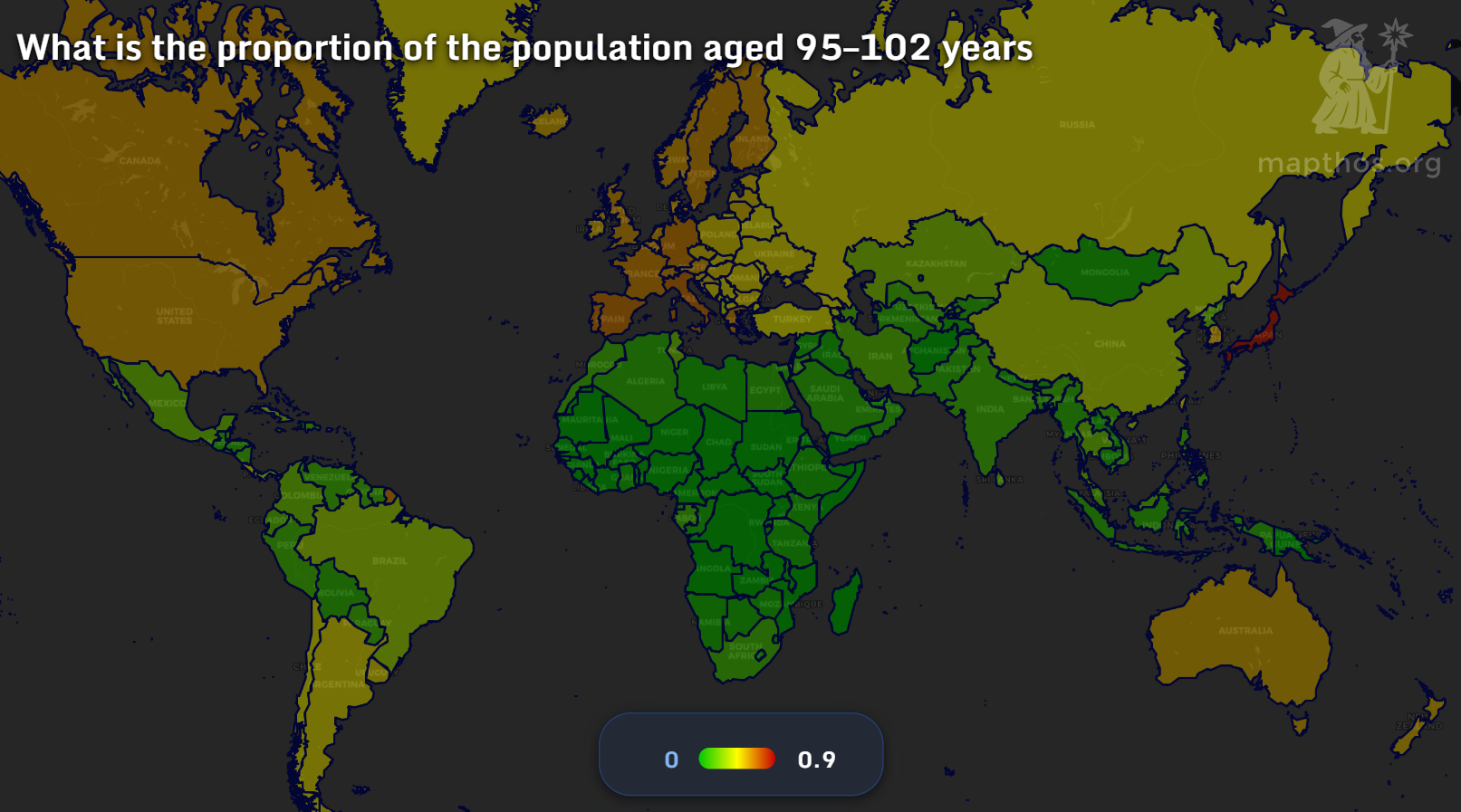
Japan, Northern Europe, and Canada now host the oldest populations humanity has ever recorded — with nearly 1% of citizens above 95. As pensions strain and healthcare expands, societies are forced to reimagine what “old age” means in the 21st century.
🌐 Conclusion: Time, Labor, and Adaptation
The demographic clock ticks louder each year. Fertility, housing, migration, and automation are not separate issues — they are facets of one global transformation.
We are not just running out of workers. We are running out of time to rethink how work, life, and legacy intertwine.
👉 Explore more at app.mapthos.org
See the world. Map better. Dream big. 🌍✨